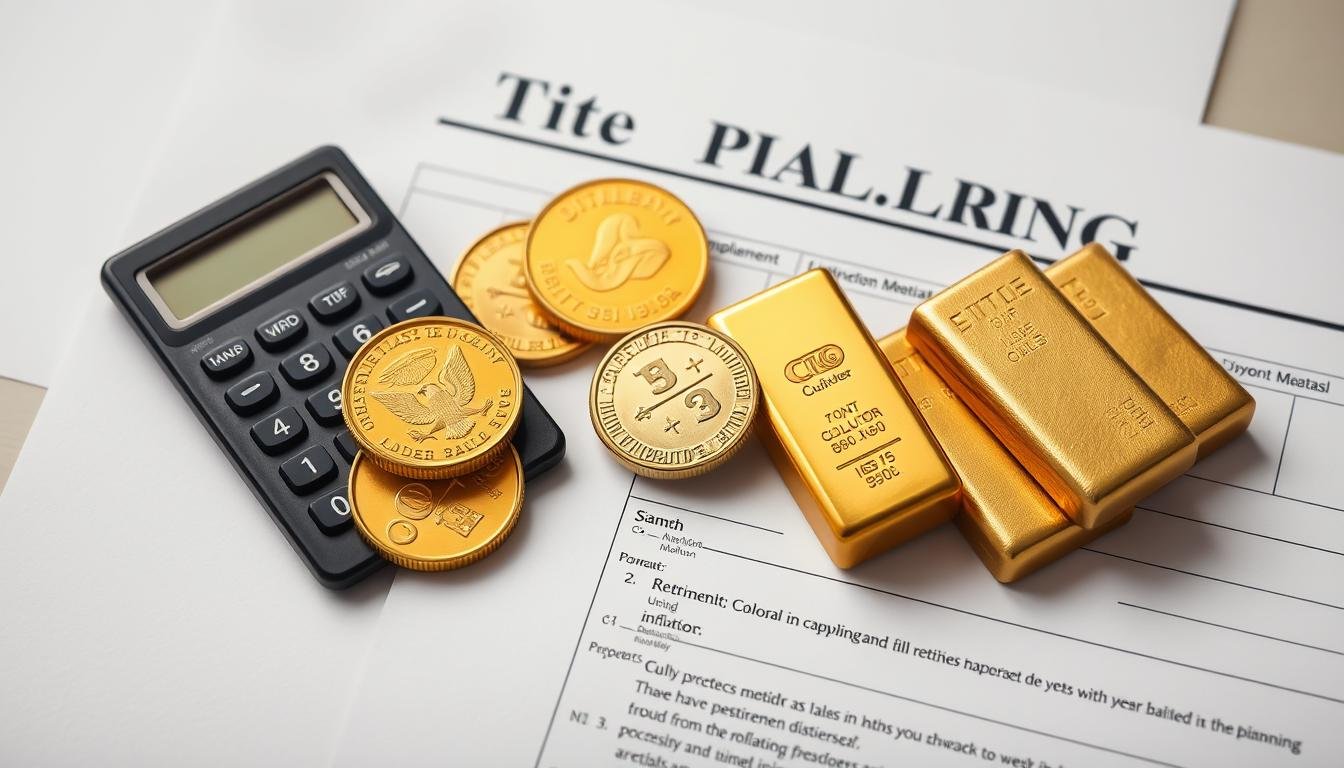As inflation continues to erode the purchasing power of traditional retirement accounts, savvy investors are turning to alternative strategies to protect their hard-earned savings. A Gold IRA offers a powerful hedge against inflation, providing stability when markets fluctuate and currencies weaken. This comprehensive guide explores how physical gold and other precious metals can safeguard your retirement nest egg from the silent wealth destroyer that is inflation.
Physical gold in a retirement portfolio can provide protection against inflation and economic uncertainty
The Growing Inflation Threat to Traditional Retirement Accounts
Inflation represents one of the greatest long-term threats to retirement security. Even modest inflation rates can dramatically reduce your purchasing power over time, turning what seemed like adequate savings into insufficient funds for your golden years.

The declining purchasing power of the dollar over time due to inflation
How Inflation Erodes Traditional Retirement Accounts
Traditional retirement vehicles like 401(k)s and standard IRAs are primarily invested in stocks, bonds, and cash equivalents. While these assets may provide growth during stable economic periods, they often struggle during inflationary cycles. When inflation rises, the Federal Reserve typically responds by increasing interest rates, which can negatively impact both stock and bond values simultaneously.
Inflation Impact Example: A modest 3% annual inflation rate will cut your purchasing power in half over approximately 24 years. This means $500,000 in retirement savings would effectively be worth only $250,000 in real buying power.
Even Treasury Inflation-Protected Securities (TIPS), which are designed to adjust with inflation, often fail to keep pace with the real cost of living increases experienced by retirees, particularly in healthcare and housing expenses.
Concerned About Inflation Eating Away Your Retirement?
Download our free guide to learn how inflation impacts retirement accounts and what you can do to protect your savings.
Introducing the Inflation-Proof Gold IRA Solution
A Gold IRA (Individual Retirement Account) is a specialized self-directed IRA that allows you to hold physical precious metals as part of your retirement portfolio. Unlike traditional IRAs that limit you to paper assets, a Gold IRA enables you to own tangible, physical gold and other precious metals while maintaining the tax advantages of a retirement account.

Performance comparison: Traditional IRAs vs. Gold IRAs during inflationary periods
What Qualifies for a Gold IRA?
The IRS has specific requirements for precious metals that can be included in a Gold IRA:
IRS-Approved Gold Products:
- American Gold Eagle coins
- Canadian Gold Maple Leaf coins
- Australian Gold Kangaroo/Nugget coins
- Gold bars and rounds from approved refiners (99.5% purity minimum)
Other Eligible Precious Metals:
- American Silver Eagle coins
- American Platinum Eagle coins
- Canadian Palladium Maple Leaf coins
- Silver, platinum, and palladium bars (99.9% purity minimum)
Historical Performance During Inflationary Periods
Gold has a proven track record as an inflation hedge. During the high inflation period of the 1970s, gold prices rose from $35 per ounce to over $850 by 1980, delivering returns that far outpaced inflation. More recently, during the 2008 financial crisis and subsequent quantitative easing, gold prices more than doubled while many traditional investments faltered.

Gold price performance during major inflationary periods (1970s-Present)
“Gold has maintained its value throughout thousands of years of human history, serving as a reliable store of wealth when paper currencies have failed.”
Step-by-Step Guide to Setting Up Your Inflation-Proof Gold IRA
Establishing a Gold IRA is a straightforward process when you understand the key steps involved. Here’s how to get started with your inflation-protected retirement account:
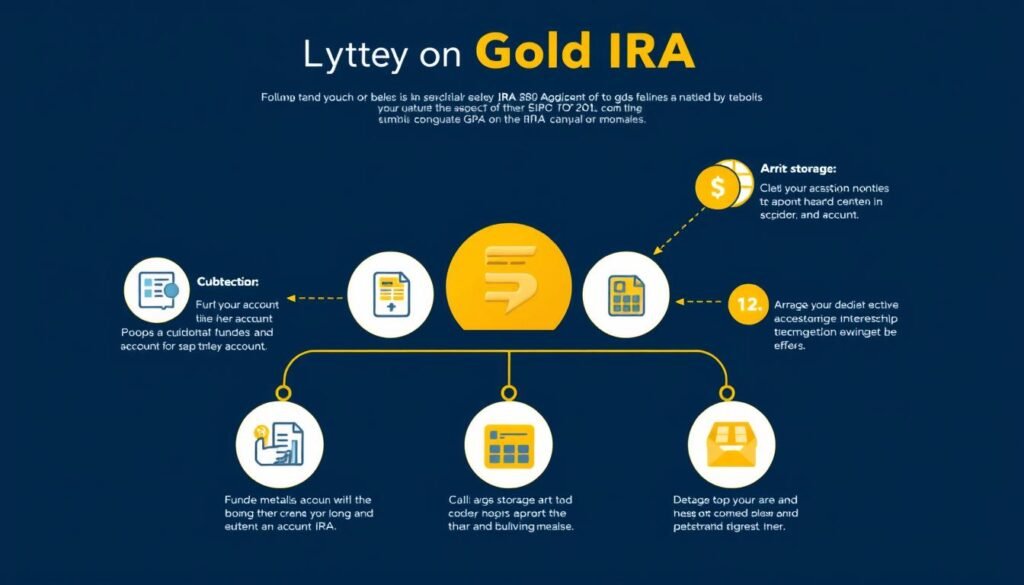
The Gold IRA setup process from start to finish
Step 1: Choose a Reputable Gold IRA Custodian
Selecting the right custodian is perhaps the most critical decision in establishing your Gold IRA. The custodian is the financial institution responsible for maintaining and protecting your retirement assets in compliance with IRS regulations.
What to Look for in a Gold IRA Custodian:
- Experience and Reputation – Look for established companies with strong customer reviews and industry ratings
- Fee Structure – Compare setup fees, annual maintenance fees, storage fees, and transaction costs
- IRS Compliance – Ensure they’re fully compliant with all IRS regulations for precious metals IRAs
- Storage Options – Verify they offer secure, IRS-approved storage facilities with proper insurance
- Customer Service – Assess their responsiveness, knowledge, and willingness to answer questions
Step 2: Fund Your Gold IRA
Once you’ve selected a custodian, the next step is funding your account. There are three primary methods to fund your Gold IRA:
IRA Transfer
Move funds directly from an existing IRA to your new Gold IRA without tax penalties. This is a custodian-to-custodian transfer that doesn’t trigger IRS reporting.
401(k) Rollover
Roll over funds from an employer-sponsored retirement plan like a 401(k), especially if you’re changing jobs or retiring. Must follow IRS timing rules to avoid penalties.
Cash Contribution
Make a direct cash contribution to your Gold IRA, subject to annual IRA contribution limits ($7,000 for 2024; $8,000 if age 50+).
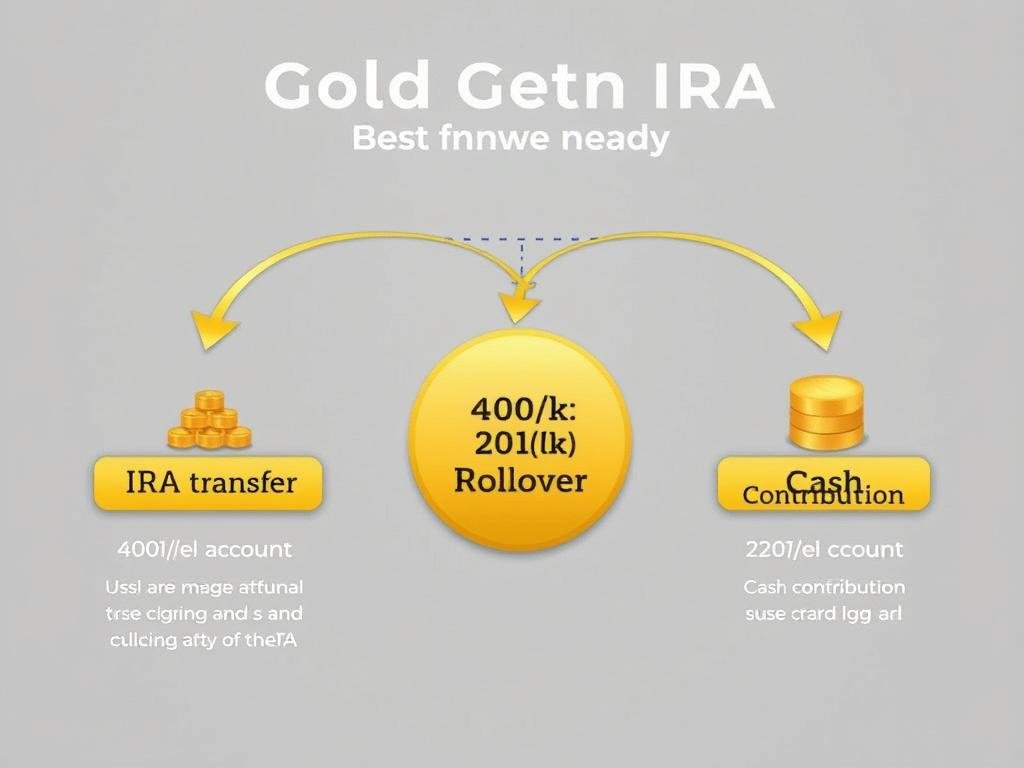
The three primary methods to fund your Inflation-Proof Gold IRA
Step 3: Select Your IRS-Approved Precious Metals
After funding your account, you’ll work with your custodian to purchase IRS-approved precious metals. Your custodian will execute the purchases on your behalf, ensuring all metals meet IRS requirements for purity and authenticity.

IRS-approved gold coins and bars eligible for Gold IRA investment
Important: The IRS requires precious metals in an IRA to meet minimum purity standards: 99.5% for gold, 99.9% for silver, and 99.95% for platinum and palladium.
Step 4: Arrange Secure Storage
IRS regulations prohibit personally holding the physical precious metals in your Gold IRA. Instead, they must be stored in an IRS-approved depository. Your custodian will arrange this storage on your behalf.

IRS-approved secure storage facility for Gold IRA assets
Reputable depositories offer segregated storage (your metals are stored separately from others) or allocated storage (your specific metals are identified and allocated to you but may be stored with others). Segregated storage typically costs more but provides additional security and peace of mind.
Step 5: Manage Your Gold IRA Investment
Once established, your Gold IRA requires periodic review and management. You can make additional contributions (within annual limits), adjust your precious metals holdings, or begin taking distributions when eligible.
Distribution Note: When taking distributions from your Gold IRA, you can either take physical possession of the metals (triggering taxes and potential penalties if under age 59½) or have the custodian sell the metals and distribute the cash value.
Gold IRAs vs. Other Inflation-Resistant Investment Options
While a Gold IRA offers excellent inflation protection, it’s important to understand how it compares to other inflation-resistant investment options. This comparison can help you determine the optimal allocation for your retirement portfolio.

Performance comparison of various inflation-resistant investment options
| Investment Option | Inflation Protection | Growth Potential | Liquidity | Volatility | Tax Advantages |
| Gold IRA | Excellent | Moderate | Moderate | Moderate | High (IRA benefits) |
| TIPS (Treasury Inflation-Protected Securities) | Good | Low | High | Low | Moderate |
| Real Estate | Good | High | Low | Moderate | Moderate |
| Dividend Stocks | Moderate | High | High | High | Varies |
| Commodities (ex. Gold) | Good | Moderate | Moderate | High | Low |
TIPS (Treasury Inflation-Protected Securities)
TIPS are government bonds designed to protect against inflation by adjusting their principal value based on changes in the Consumer Price Index (CPI). While they offer direct inflation protection, their returns are typically lower than those of physical gold during high inflation periods.
TIPS Advantages
- Direct adjustment to official inflation rates
- Government-backed security
- High liquidity
- Low volatility
TIPS Limitations
- Based on CPI, which may understate real inflation
- Lower returns during high inflation
- Subject to interest rate risk
- Taxable even on inflation adjustments
Real Estate
Real estate has traditionally been a strong inflation hedge, as property values and rental income tend to increase with inflation. However, real estate lacks the portability, divisibility, and liquidity of precious metals.
Real Estate Advantages
- Potential for rental income
- Property value appreciation
- Tax benefits through depreciation
- Leverage through mortgages
Real Estate Limitations
- High entry costs
- Property management responsibilities
- Low liquidity
- Location-dependent performance
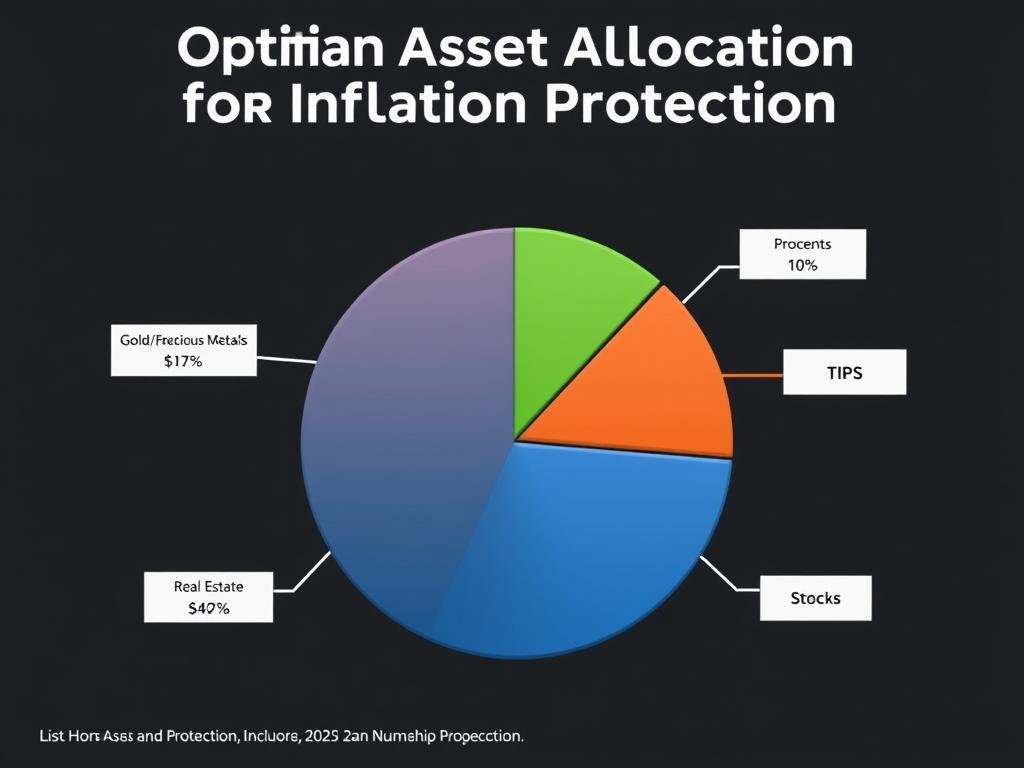
Suggested asset allocation for optimal inflation protection
Understanding the Risks and Limitations of Gold IRAs
While Gold IRAs offer significant benefits for inflation protection, it’s important to understand their potential drawbacks and limitations to make an informed investment decision.
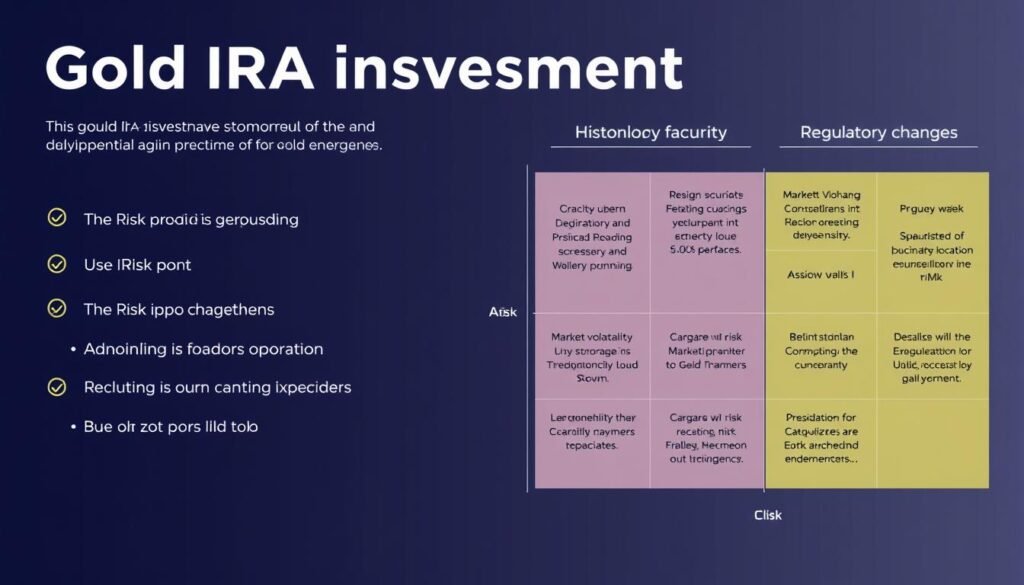
Risk assessment factors for Gold IRA investments
Storage and Insurance Costs
Unlike paper assets, physical gold requires secure storage and insurance, which incur ongoing fees. These costs typically range from 0.5% to 1% of your holdings annually, which can impact your overall returns, especially during periods of price stability.
Market Volatility
While gold tends to maintain its value over the long term, it can experience significant short-term price fluctuations. These price swings can be influenced by factors such as interest rates, currency values, and global economic conditions.
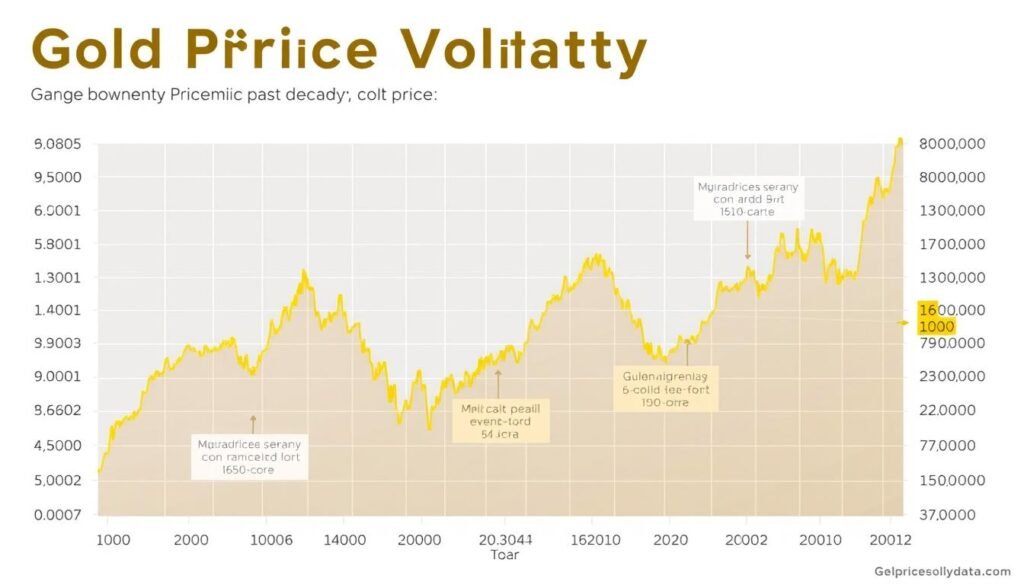
Gold price volatility over the past decade with key market events
Liquidity Considerations
While gold is generally considered a liquid asset, converting physical gold in an IRA to cash involves a multi-step process. Your custodian must arrange for the sale of the metals and then distribute the proceeds, which can take several days to complete.
No Income Generation
Unlike dividend stocks or interest-bearing bonds, physical gold does not generate income. Its value is based solely on price appreciation, which means it doesn’t provide cash flow during your retirement years.
Optimal Diversification Strategies with Gold IRAs
A well-balanced approach to retirement planning doesn’t rely solely on any single asset class. Instead, strategic diversification that includes gold and other precious metals can provide optimal inflation protection while managing overall portfolio risk.
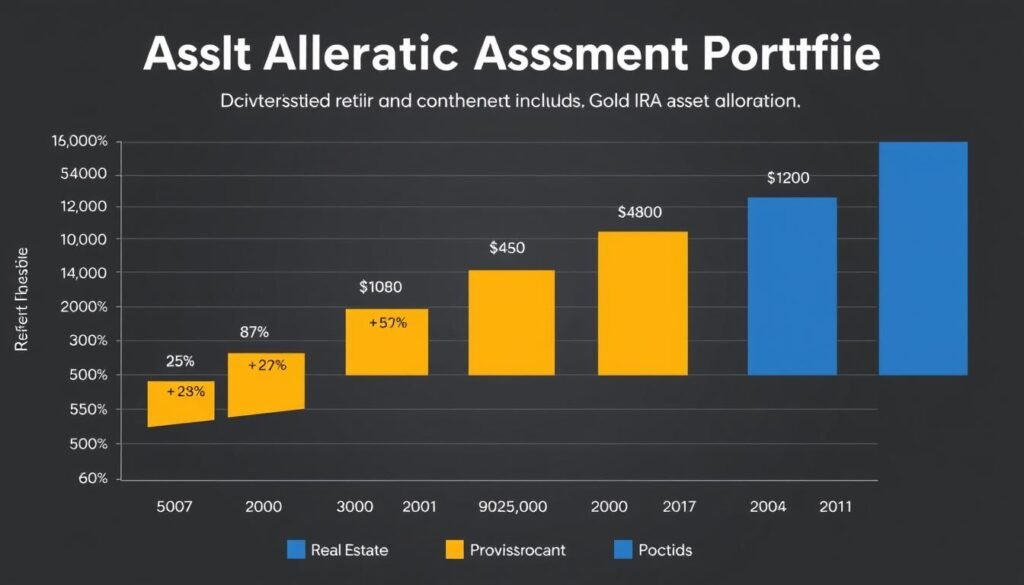
Balanced retirement portfolio allocation including Gold IRA component
The 5-15% Gold Allocation Rule
Financial experts typically recommend allocating between 5% and 15% of your retirement portfolio to precious metals. This range provides meaningful inflation protection without overexposing your portfolio to a single asset class.
“Don’t put all your eggs in one basket, but make sure one of your baskets is lined with gold.”
Balancing Different Precious Metals
Within your precious metals allocation, consider diversifying across different metals to optimize your inflation protection:
Gold (60-70%)
The foundation of your precious metals portfolio, gold offers the most reliable inflation protection and global recognition as a store of value.
Silver (20-30%)
Often more volatile than gold but with greater industrial demand, silver can provide both inflation protection and growth potential.
Platinum/Palladium (5-10%)
These rarer metals have significant industrial applications and can provide additional diversification within your precious metals allocation.
Dollar-Cost Averaging into Gold
Rather than making a single large purchase, consider building your Gold IRA position gradually through dollar-cost averaging. This approach helps mitigate the impact of gold’s price volatility and potentially improves your average purchase price over time.

Dollar-cost averaging strategy for building a Gold IRA position
Ready to Diversify Your Retirement Portfolio?
Speak with a qualified financial advisor who specializes in precious metals IRAs to create a personalized inflation protection strategy.
Conclusion: Securing Your Retirement Against Inflation
In an era of unprecedented monetary expansion and growing inflation concerns, protecting your retirement savings has never been more critical. An Inflation-Proof Gold IRA offers a time-tested solution that has preserved wealth through centuries of economic uncertainty.

Securing retirement peace of mind through strategic inflation protection
By allocating a portion of your retirement portfolio to physical gold and other precious metals, you create a powerful hedge against inflation while maintaining the tax advantages of an IRA structure. While no investment strategy is without risk, the historical performance of gold during inflationary periods makes it a compelling component of a well-diversified retirement plan.
Remember that the optimal approach combines traditional retirement assets with alternative investments like a Gold IRA. Consult with a qualified financial advisor to determine the right allocation for your specific retirement goals, time horizon, and risk tolerance.
Key Takeaways:
- Inflation poses a significant threat to traditional retirement accounts
- Gold IRAs offer tax-advantaged precious metals ownership
- A 5-15% allocation to precious metals provides meaningful inflation protection
- Diversification across different metals optimizes your protection strategy
- Professional guidance ensures proper implementation and compliance

